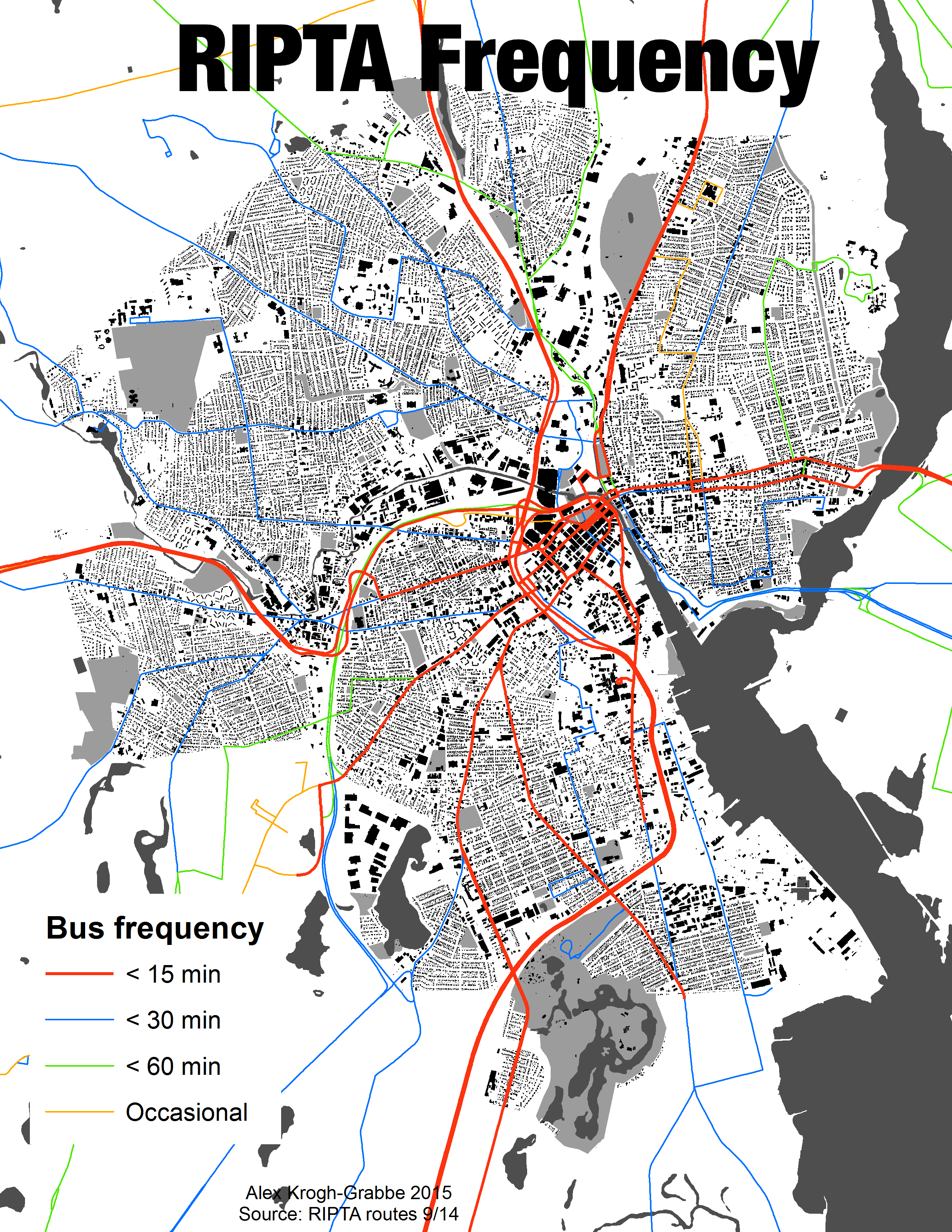I like RIPTA. Transit agencies struggle to provide direly needed transportation access to thousands of people, and they don’t get to take a day off if they’re not feeling up to it. I’ve seen some RIPTA staff in action, and they impress me. I’m also pumped about the redesigned Kennedy Plaza; for all the flak it gets, I think it’s an excellent thing for transit service in Rhode Island and a boon to rejuvenating downtown Providence.
But this is the 21st century.
In the 21st century, people don’t want to wait around in the cold for a bus, because they don’t have to. They have the internet, which can tell them, based on real-time location data, exactly when their bus is going to arrive. Or, maybe they live in an urban area that values its transit system enough to provide frequent enough service such that, even if you miss one bus, the next one will be along before your toes fall off from frostbite.
Unfortunately, neither of those things are true in Rhode Island.
Google Maps and other transit apps are still waiting for RIPTA to provide them with real-time data, instead of relying on scheduled bus arrival times. When you’re standing out at a stop in the cold, and you have a meeting you need to get to, what do you do with the statistic that a majority of buses arrive at each stop within 5 minutes of their scheduled time? Do you wait to see if the bus will come? Or do you walk over to the next transit corridor to maybe catch that bus? Or, more likely, you just don’t rely on the bus, because you don’t know whether it can get you there. When you can’t rely on the bus, it’s not a good alternative to car ownership for most people.
Or wait! Even if there’s some major technological, bureaucratic, budgetary, or other reason RIPTA can’t set up a process to format its data in the necessary fashion and provide a feed for Google and other apps (or even *gasp* citizen developers!) it doesn’t matter, right? There are a lot of bus lines; people can rely on the schedule and function pretty okay, yeah?
Except the problem is, RIPTA’s bus service is on the low end of frequency. Transit expert Jarrett Walker categorizes transit service based on off-peak frequency into four categories: buses every 15 minutes or less, every 30 minutes or less, every 60 minutes or less, and occasional service. If you miss those most frequent buses, no worries, because another will be along soon. If you miss the less frequent ones, you know the drill. Walk home, and tell that fantastic job or client you were really excited about that you won’t be able to make it.
So here’s a map of Providence with RIPTA routes colored according to frequency. Red is the best, then blue, then green, then orange is practically nonexistent service.
But look! There are lots of red lines there! Except if you notice, those red lines are mostly along limited-access highways, without much in the way of transit access to the people living next to them. I could count on one hand the corridors outside of downtown with actual frequent transit access:
- North Main (paragon of pedestrian friendliness that THAT is)
- West Broadway
- Cranston Street
- Broad
- Elmwood
- Waterman/Angell
- Eddy (only to Thurbers)
Okay I borrowed two fingers from the other hand. But THAT’S IT. No frequent service to RIC or PC. No frequent service to the Wards of City Council members Narducci, Ryan, Correia, Igliozzi, Hassett, or Matos, and hardly any to Councilman Zurier’s Ward 2 or Council President Aponte’s Ward 10. And really, the frequent coverage ain’t great in many other Wards; they just have one or two frequent lines running through them.
Ideally RIPTA would solve both of these problems, but of course there are budgetary constraints and an imperative to cover the whole service area with service. As Walker states in this awesome video (yes I’m a geek), there is a tension between the goal of coverage and the goal of frequency. And indeed, with the R-line and suggestions of further focus on the highest-potential routes, RIPTA is headed more in the direction of frequency than it has been historically.
But the other problem? C’mon RIPTA. We’re living in the 21st century. Get on it. Or tell us why you’re failing in this way. Do you think we don’t care? Or that you’ll look bad? We do care. You already look bad when you don’t tell us why you’re deficient in this area. Here are some links to help get you there if you’re not already on your way: GTFS-realtime. MBTA’s live-feed page. Transit Camp 2015 conference notes.

